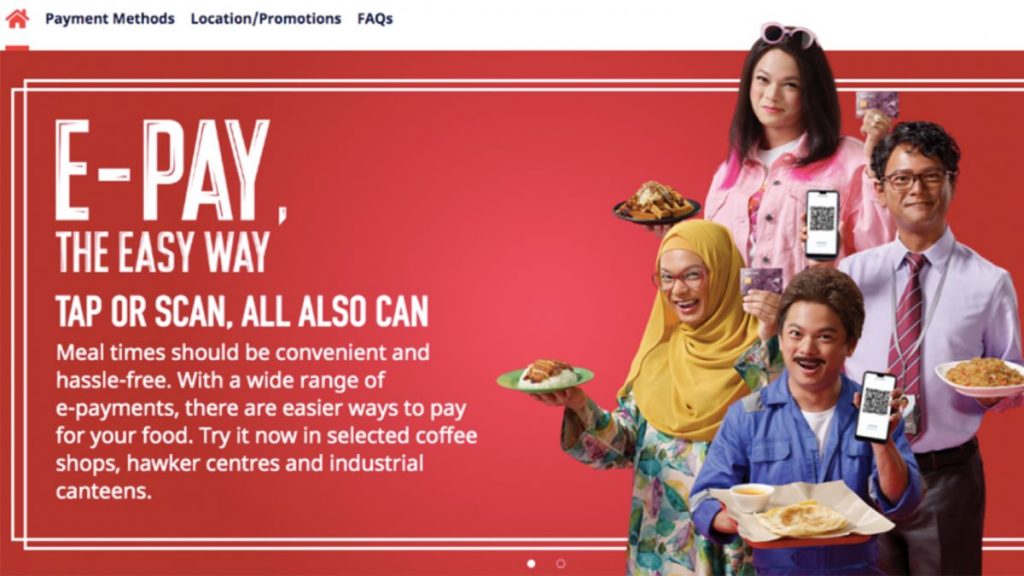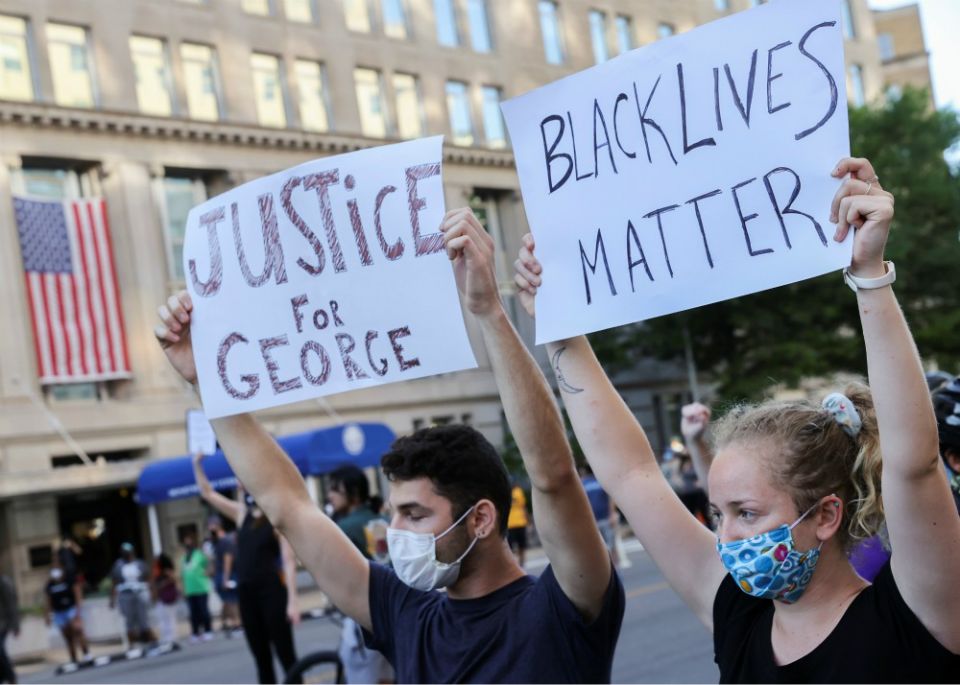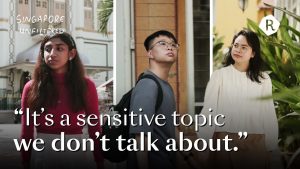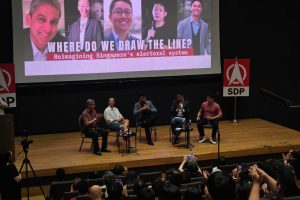It is pretty well-established that the West holds a reputation for being more willing to discuss taboo topics including race. The recent Atlanta shootings spawned the #StopAsianHate movement—a movement so extensively discussed that it sparked global conversation.
For a period of time, it seemed like everyone, from YouTubers/social media activists to Hollywood celebrities and even politicians, were hosting public discussions to talk about their own experiences with racism, what changes they hoped to see moving forward, and how they wished to see those changes implemented. This is a vastly different approach to the way Singapore handles and responds to racially-charged incidents.
Singaporeans living abroad have a unique dual perspective: living overseas, they’ve experienced racism themselves and witnessed how Western countries talk about racism; as Singaporeans, they understand the racial situation back home better than any foreigner. As such, these Singaporeans are perfectly suited to make nuanced comparisons between racism in Singapore versus Western countries, and analyse what we should (and shouldn’t) learn and apply from the West to Singapore.
I asked four such Singaporeans whether living overseas has given them fresh insights on how we can improve racial discourse.
A First Taste of Racism
When Eleanor hopped on a plane to pursue her undergraduate studies in the United States in 2019, she was optimistic. Her initial impression of the US: diverse. In a country colloquially referred to as a melting pot of cultures, how bad could racism be?
Quite, it turns out, and especially so post-Covid 19.
In the short 8 months she spent there before coming home to Singapore, she could already sense growing repulsion towards Asian faces, from a schoolmate getting up to sit further away from her in a lecture hall, to having an acquaintance literally say to her face that they were scared of seeing Asian faces on campus.
Anti-Asian sentiment has spiked in recent years due to the groundless association between people of Asian descent and the coronavirus outbreak (or as Donald Trump calls it, the “China-virus”). But we mustn’t mistake this xenophobia as a consequence of the pandemic—it has been there all along. The Atlanta mass shootings, where six victims were women of Asian descent, and the more recent mass shootings at the FedEx warehouse in Indianapolis where four Indian Americans were killed, are harsh reminders that such sentiments are still alive.
Esther, who’s been living in Amsterdam for about four years, has had her fair share of encounters with racism, from minor annoyances like people making slanty-eyed faces at her, to struggling to secure gigs as an actress. Whatever limited roles she did get, she got because they needed someone Asian to play the part; her acting talents were an afterthought.
Sarah* (not her real name) is no stranger to this fight for recognition as well. Despite having graduated from one of the most prestigious music schools in the US, her non-Asian peers often had much better access to opportunities.
She recalls meeting a “pretty big shot producer”, introducing herself, and offering to show him some of the tracks that she produced. His response was: “You must be a good singer.” But when her non-Asian friend (who graduated from the same music school as her) did the same, he was immediately offered to “come into the studio sometime”.
When I asked them how these instances made them feel, their responses were more or less the same: shock, anger, and a bone-deep sense that this was unfair.
For them, these have been jarring experiences—being the majority race in Singapore, they’ve had the luxury of going about their daily lives without having to spare a thought about racism. But racial tension has always lay beneath the surface of Singapore’s seemingly calm waters; as the Chinese majority, we (myself included) sail by on our boats of privilege while minority groups struggle to stay afloat.
The recent incident of a brownface advertisement for an e-payment website is a prominent example of how harmful racist stereotypes of Malays and Indians still subconsciously exist in the minds of Singaporeans. But besides the occasional, public blunder of companies, these stereotypes are typically not brought to light and discussed openly, reinforcing the illusion of an idyllic, racially-harmonious Singapore.

Changing Perspectives
These Singaporeans’ unfortunate experiences have increased their empathy for minority races in Singapore, and given them a chance to reflect on their Chinese privilege.
Eleanor has always firmly disapproved of the casually racist behaviour occurring in Singapore. But there will always be a gap between sympathy and empathy—between taking a stance based on theoretical morals and hypothetical situations, and being actually put in such a situation yourself.
She reflects, “I feel like I didn’t really grasp the severity of discrinimation or racism that minority groups [in Singapore] face before I went to the US, because becoming a minority myself really made me feel how small you can feel when people around you treat you differently because of your skin colour.”
For Esther, this epiphany was accompanied by a whole lot of guilt: Taking a glimpse at what minorities in Singapore have to go through on a daily basis made her “so guilty for being a bystander in so many racist instances in which I could have stood up for my Malay/Indian friends.”
She recalls incidents when she was working in Singapore where her colleagues would crack racist “jokes” hinging on harmful stereotypes of Malays and Indians, “And that one poor Malay or Indian person in our company would just smile along with the rest of us fucktards who think we’re so funny just because we’re the majority race, when actually the “joke” wasn’t funny at all, and said Malay or Indian person was probably just being polite, or laughing at the expense of their own race, because it’s often difficult to make a stand when you’re outnumbered.”
Lessons from the West
During her stay in the US, Eleanor made a fascinating observation about the American attitude towards social activism:
“In the US, there’s this line of thought that … dominant groups like the white people should be the ones stepping up and helping to advocate for these [minority] communities, because especially in moments of racial violence, like the Atlanta shootings of six Asian women, … [minorities] are hurting, they are grieving, so it’s a time where privileged people, where dominant communities should be the ones stepping up and using their voice to elevate other people’s … instead of just leaving the burden of the work to themselves”.
Similarly, Esther describes how “People [in Amsterdam] talk about these issues and are less afraid to push for change. [They] also see the value in change.”
This positive attitude towards improvement starkly contrasts with Singaporeans’ contentment to uphold the status quo, which might be rooted in a subconscious fear of being called out as racist. Nobody wants to believe that they too might have racist tendencies, and having open conversations would force them to properly evaluate their own actions.
And so, to Esther, the key to a productive and meaningful conversation about race lies in people’s receptiveness to change.

This notion couldn’t be more useful in Singapore, where the Chinese demographic makes up more than 70% of the population. If Singaporeans were willing to adopt this mindset, there would be a visible increase in conversations about race, just by sheer numbers.
Pragmatically speaking, people with preconceived notions and biases against minority groups might also be more willing to listen to a fellow Chinese person, and end up being more likely to change their minds about minorities.
This idea echoes a sentiment expressed in a video on racism we published last year:
“It would be helpful if there were more people … in the majority … telling other people in that group like, ‘Hey, don’t be so racist, let me educate you.’ so that it doesn’t land on minorities [to do so].” He explains feeling tired of having to constantly educate ignorant people—a reminder to the rest of us that it’s really not fair to put minorities through this additional torture.
As Karyn puts it, “There are a lot of people [in Singapore] that think of [racism] as: it’s not me doing it, it’s someone else, so it’s not my problem. And I think that is a very typical Singaporean attitude, like “It’s none of my business.” I think we have to realise that it is everyone’s business, and by being a bystander and ignoring it, you’re also enabling that kind of behaviour.”
A lesson to take home from many Amsterdammers: we need to “acknowledge that not everything [our] community of people has done is right”. Otherwise, racial discourse would be reduced to pointing arrows and deflecting blame.
All That’s Unsaid
The first step to solving any problem is agreeing what the problem is, or that it even exists in the first place. When it comes to racial issues, this general agreement is something that is glaringly missing in Singapore. In that same video we put out last year about casual racism in Singapore, participants were immediately stumped by the first question: “Do most Singaporeans agree on what racism looks like?” There was no conclusive answer. As one participant put it succinctly, “I think most Singaporeans don’t agree what racism is, because nobody really dares to talk about it in the first place.”
The obvious, and perhaps only solution to this is to have more open discussions about our experiences (or lack thereof) with racism. Of course, this is easier said than done.
“Racial discussions are very sensitive in Singapore, so I think the government is kind of cautious about facilitating that, and how facilitating that would look like, and that’s a very valid concern.” remarks Eleanor. She’s right, but at the same time, this cautiousness has bred a hush-hush culture where Singaporeans end up choosing not to talk about the issue at all, rather than risk being accidentally offensive and facing backlash.
“We’re always taught to be politically correct. Always taught to mince our words, maybe sugarcoat it, even, so that we don’t offend other people… But what is racial harmony if you don’t even freaking talk about it?” — RICE video participant
The Status Quo, and Beyond
Racism may not be as severe a problem in Singapore as compared to in countries like the US; nobody is being pinned to the ground or shot dead in a massage parlour. But this might present its own set of problems.
“I think [racism] is serious in Singapore precisely because the racism is so insidious and hidden in the cracks, affecting minority ethnicities regularly without people even being aware of it,” Esther comments. The everyday casual forms of racism aren’t noticeable enough to spark serious conversations, therefore a lot of minorities slip through the cracks.
“Imagine if an apartment rental ad in the US had the words “no Blacks and Latinos allowed, only White people preferred”. This ad would never float there. That property agent would be burnt at the stake. Same as in Holland. Ads like these would never float here. And yet it is so common to see things like that in Singapore, with no one even batting an eyelid and questioning it.”
Navigating a touchy issue like racism definitely isn’t a piece of cake, and Sarah acknowledges that fact: “I think the government is doing it’s best to eliminate…any sort of segregation.”
In some ways, Singapore definitely has more systems in place to encourage racial cohesion as compared to other countries. “Ever since we were kids…we had racial harmony day and we had everything that you don’t see in other countries,” Sarah points out. “Like, there’s no racial harmony day in America.” She chuckles at the idea.
But I cannot help but ponder whether all this is somewhat performative.
Karyn points out that even when topics of race are raised in Civic Education classes, the curriculum is “idealistic” and doesn’t go beyond preaching about “loving each other [and] respecting each other”.
A conversation about the education system would not be complete without addressing, for example, issues like Special Assistance Plan (SAP) schools, which consistently perform near the top when it comes to national exams. These schools have it all—the prestige, funding, and resources to ensure that their name comes out on top of the PSLE cut-off-point list year after year, and non-Chinese-speaking students aren’t granted access to these top-tier opportunities.
To be clear, I am not saying that students can only excel if they go to an elite school. But we cannot ignore the fact that a specific demographic is systematically denied access to institutions that are perceived as “elite” by society.
Having studied in a SAP school, I’ve observed that a sea of Cheongsam-clad students on Racial Harmony Day is truly the epitome of irony. And we fully recognize that—snickers can be heard in the classroom whenever a teacher preaches about racial harmony to a room of Chinese faces.
At the same time, focusing on the education system is not enough to address systemic racism.
Eleanor suggests looking at our socio-economic inequalities, and addressing workplace discrimination. “Because of this implicit discimination, for example workplace discimination, minority groups may not get as many job opportunities, or career opportunities as dominant races, which perpetuates a vicious cycle of socio-economic inequality.”
The media also has a huge role to play in breaking racist stereotypes. Take it from Esther, who has experience with the inner-workings of the entertainment industry. “99% of ads and corporate videos look for Chinese actors. Think about all the DBS, shopping mall, condominium ads/banners that you see. It is almost always a Chinese face on those ads. So many acting roles for local TV have also been written with a Chinese person in mind.”

Esther is also pretty critical of local television in Singapore. In her opinion, whatever diversity we have on TV shows is lacking; merely performative: “I can almost imagine the producers in the meeting room discussing ‘Ok, we need four Chinese actors, two Malay actors, and one Indian actor for the show,’ as if they’re fulfilling some numeric quota.”
“Advertising agencies need to be less afraid of putting out advertisements that might look very different from the usual. People might not seem to pay much attention to ads, but they actually play such a huge role in planting subconscious thoughts into our minds. If we’re always seeing Chinese people on the front of bank and condo ads, it plants the subconscious thought that Chinese people are ‘better’.”
She hopes to see more diverse faces in local media, which can normalise the notion that minority groups are equal and can belong in any industry.
How can we, as individuals, support our minority peers?
A crucial first step is to listen, actively listen, to them when they have something to say.
Karyn: “It’s difficult to envision what is happening if you don’t experience it first hand, so the next best thing to do is to listen to the experiences of others, and not put down or doubt their experiences. For example, if someone goes through a situation where they faced racism, don’t question it like ‘Do you think they meant something else?’”
“It’s a lot about listening, being sensitive to other’s emotions, and being open to discuss your own biases as well. I think often we get very defensive in a lot of racial conversations, like ‘I’m not racist what, I don’t say things like that.’ But it’s not about that, it’s about the bigger picture, it’s about being open, listening more, and just being more sensitive to other people.”
It’s also important that we speak out whenever we witness someone being racist. That includes correcting any misconceptions about racial stereotypes, and having a zero-tolerance policy towards racist “jokes” that our friends might make—calling them out on their racist behaviour instead of laughing alongside everyone else.
Social media can also be a powerful tool to push for positive change. As members of Gen Z, both Karyn and Eleanor have observed an increasing trend of youths finding their voices online to advocate for minority rights, and are optimistic about its potential.
Karyn: “If you really stand for something, then I think you could use social media to enable your cause a lot better, because like that’s the way that a lot of news is being spread anyway.”
We should also keep in mind that our experiences do not necessarily reflect others’ experiences.
Eleanor: “There is definitely racism going on, and if you think there isn’t, then you are part of the privileged group who may not really experience that in everyday life. So, you really have to open up your minds, interact with more people outside of your immediate circle, and find out more for yourself. That’s what I’m trying to do for myself as well.”
Have you ever experienced racism while living abroad? Tell us at community@ricemedia.co.






